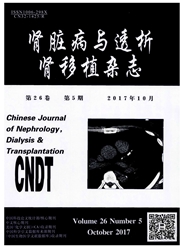

 中文摘要:
中文摘要:
外泌体(exosomes)是由细胞中的内涵体所分泌的一类直径40~150 nm的微小囊泡,可通过受体介导的交互作用直接刺激靶细胞,或通过向靶细胞转移各种生物活性分子等方式发挥其生物学功能。近年越来越多的研究投向利用exosomes进行疾病诊断、治疗及预后判断。然而目前对exosomes的分离及纯化方法尚存在一些技术上的制约,缺乏公认的标准,在一定程度上影响了exosomes的研究及其应用。本文就exosomes的研究现状和分离、纯化方法方面做一简要综述。
 英文摘要:
英文摘要:
Exosomes are a class of extracellular vesicles released by cells, with a size range of 40-150 nm and a lipid bilayer membrane. Exosomes contain membrane receptor, mRNA and microRNA, and may mediate specific cell-tocell communication and activate signaling pathways in cells they fuse or interact with. With the deepening of its research in recent years, emerging evidence suggests that exosomes can be used as liquid biopsies and noninvasive biomarkers for early detection, diagnosis, and treatment of patients. However, there is no "gold standard" for the separation and purification of exosomes, which limits the research progress. This paper will review the research progress of exosomes, and the method of exosomes separation and purification in recent years.
 同期刊论文项目
同期刊论文项目
 同项目期刊论文
同项目期刊论文
 期刊信息
期刊信息
